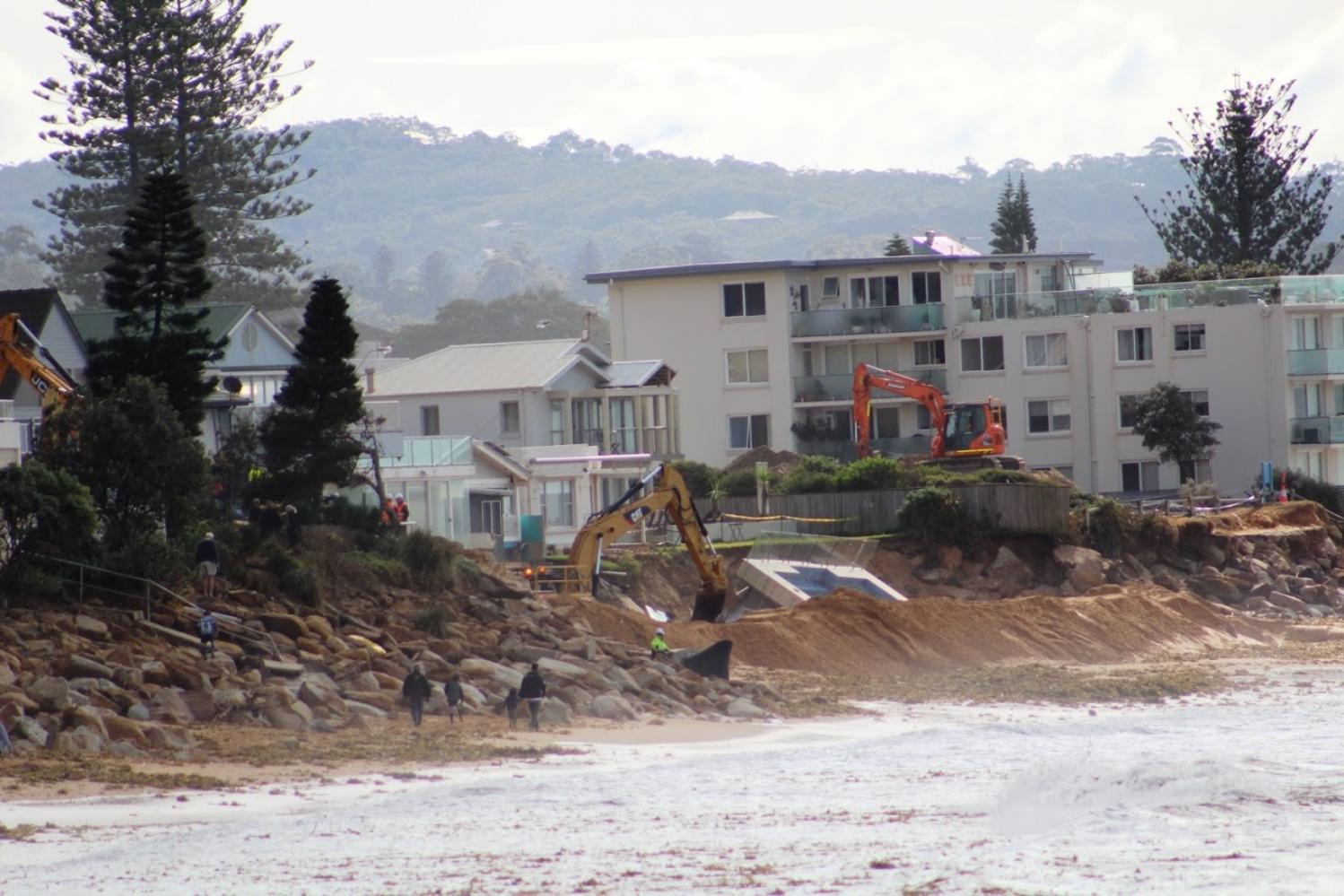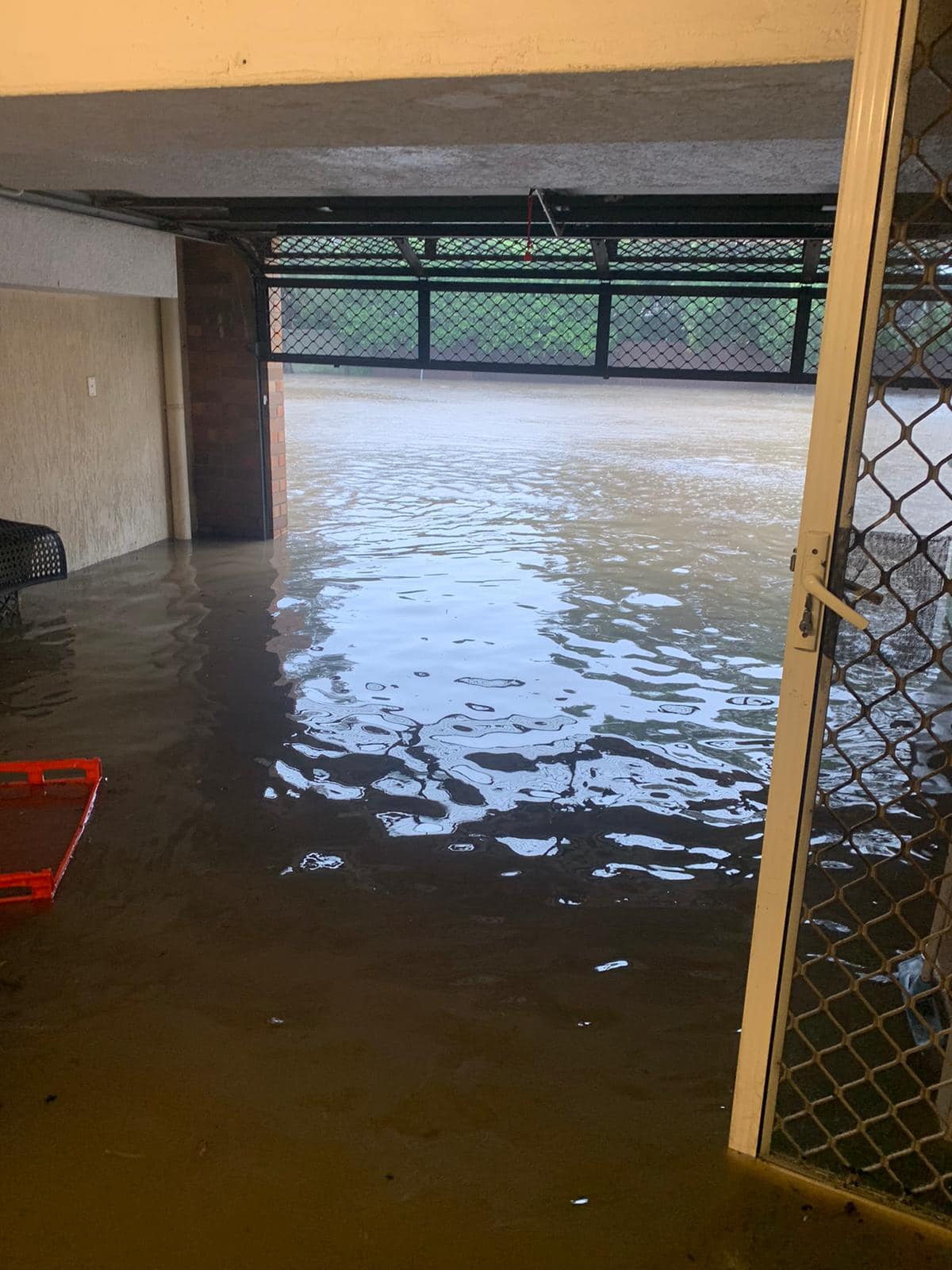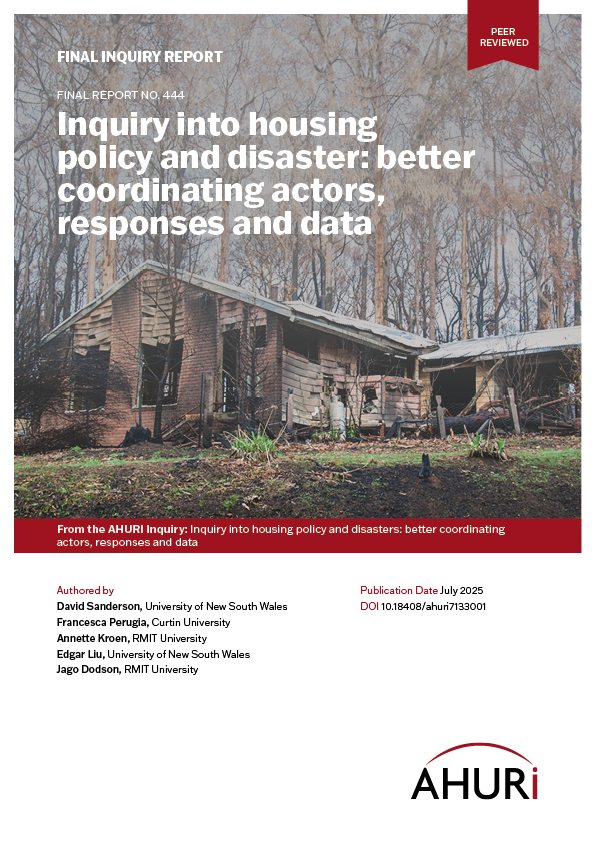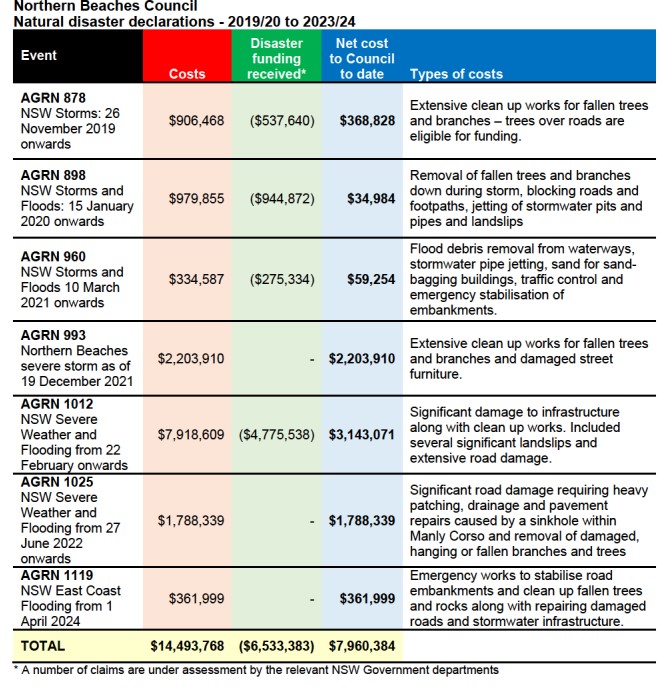Disaster-ready housing starts local: Landmark Inquiry from AHURI Urges fourth 'R' for Councils

With climate disasters on the rise, a new report urges governments to rethink housing policy – starting with local leadership, flexible planning, and long-term resilience strategies.
As climate-related disasters become more frequent and severe, a landmark national research inquiry led by UNSW Sydney’s Professor David Sanderson is calling for a fundamental shift in how Australia prepares for and responds to disasters – beginning with housing policy and local government empowerment.
The full report “Housing policy and disaster: better coordinating actors, responses and data”, was released July 29 by the Australian Housing and Urban Research Institute (AHURI).
Conducted in collaboration with researchers from RMIT and Curtin University, the two-year-long inquiry draws on policy analysis, literature reviews and case studies from seven post-disaster recovery events across four states. It also included insights from community members, government officials, and industry leaders.
NBC Carrying $8 Million Climate Change Deficit
During the ‘Ability of local governments to fund infrastructure and services’ NSW Parliament Inquiry a question to the Chief Financial Officer, Northern Beaches Council revealed a deficit of almost $8million in costs sustained by weather events.
The CFO's Answers to Questions on Notice the response to 'What types of costs are incurred in response to a natural disaster?' was:
The Northern Beaches is highly exposed to a raft of natural hazards with current data indicating:
- Over 22,000 properties are affected by flood;
- 19,000 properties are bush fire prone;
- 63,000 properties exposed to moderate to high geotechnical risk, and
- close to 5000 properties affected by coastal hazards.
The recently released NSW State Disaster Mitigation Plan estimates that by 2060 the Northern Beaches will have the highest Total Average Annual Losses in NSW by 2060, with estimated losses of close to $1 billion dollars per annum to the built environment alone.
The following table sets out the types of costs incurred by Council in the past 5 years for natural disasters. Northern Beaches Council Natural disaster declarations - 2019/20 to 2023/24:
A fourth 'R' for Councils
As climate related disasters become more prevalent, the new AHURI research argues that local governments should add a fourth ‘R’ for ‘resilience’, in addition to their traditional ‘rates, roads and rubbish’ remit.
‘This resilience remit is about improving local ownership of decisions to manage how disaster affects local communities,’ says lead author of the research, Professor David Sanderson from the University of New South Wales.
‘The key role of local government is not only when disaster hits - it’s also about preventing and mitigating disasters before they occur, and managing the long recovery process after. After all, they are best placed to achieve this, given the right support.’
But to fulfil this role, they need better support from state and Commonwealth governments. ‘Local governments already do the best they can to support their communities to prepare for, prevent and respond to disasters. However, this role is hindered by a lack of resources, lack of investment and a lack of political authority,’ says Professor Sanderson. ‘The role is also hindered by a lack of reliable data.’
Better coordination, smarter planning
While bushfire risk has been increasingly integrated into planning policies, the report found that other hazards – like floods and cyclones – remain under-addressed.
Key recommendations include:
- Embedding disaster risk reduction into housing and settlement strategies
- Smarter zoning and building standards
- Flexible planning rules to enable rapid response and recovery.
The report also highlights the need for clear, pre-disaster policies – such as managed retreat, buyback schemes, and temporary housing guidelines – to avoid reactive decision-making in the aftermath of crises.

Newport shopping centre area flooding -0 March 2022
Role of local government starts well before disasters strike
Preparing for disasters is not seen as core business for many local governments. However, having a suite of plans in place before such an event makes it much easier for local governments to allocate and direct resources when the event occurs.
‘It starts with having accurate data of where disasters might happen and what their impact could be,’ says Professor Sanderson.
‘From this data local governments can identify planning zones where housing should and shouldn’t be built, or what levels of building protection are needed if building is allowed in those at-risk areas.’
Forward planning also means local governments know where and what type of any temporary accommodation should be built. It means construction can start very quickly to house displaced residents if necessary.
Local government actions after disasters need to be supported by good prior policy decisions
When the immediate threat from fire, flood, windstorm or other disaster has passed, local governments can find themselves overloaded, particularly if there aren’t policies in place that have been prioritised before the disaster.
Some key policies local governments need to consider include:
- having appropriate buyback schemes where housing in risky environments is bought by government and removed or demolished. These schemes need to be transparent, fair and effectively targeted to avoid harming communities
- only building temporary housing villages as a last resort. If they are used, there must be a plan for reusing them after recovery that benefits the community
- having planning rules that support and encourage ‘build back better’. This means that after disasters, houses are rebuilt so that they are more resilient to future flood and fire hazards. This might include building homes that are raised above flood levels or that use fire-resistant building materials.
State, territory and federal governments have key support roles
State, territory and federal governments can invest in better prepared communities and better recovery by building local government political authority and capacity in all aspects of disaster management. They can also improve other important aspects of disaster management, such as leading coordinated decisions on data management and leading research and evaluation of disaster responses that can support local governments in their planning, preparation and policymaking.
Having trusted data sources is essential to implementing accurate policies
‘Our research shows that having accurate and up-to-date data about disaster hazards is crucial for making effective decisions and managing risks,’ says Professor Sanderson. ‘However, there is a problem with a lack of data standards, availability and quality.’
There is also a lack of trust in the available data, which can make important decisions fraught, such as where new development is allowed.
‘Having an agreed standard of data that is kept up-to-date and always available would make planning decisions for both local and state and territory governments more transparent and accurate, particularly in the face of our changing climate,’ says Professor Sanderson.
The research, ‘Inquiry into housing policy and disaster: better coordinating actors, responses and data’, was undertaken for AHURI by researchers from UNSW, Curtin University and RMIT University.

